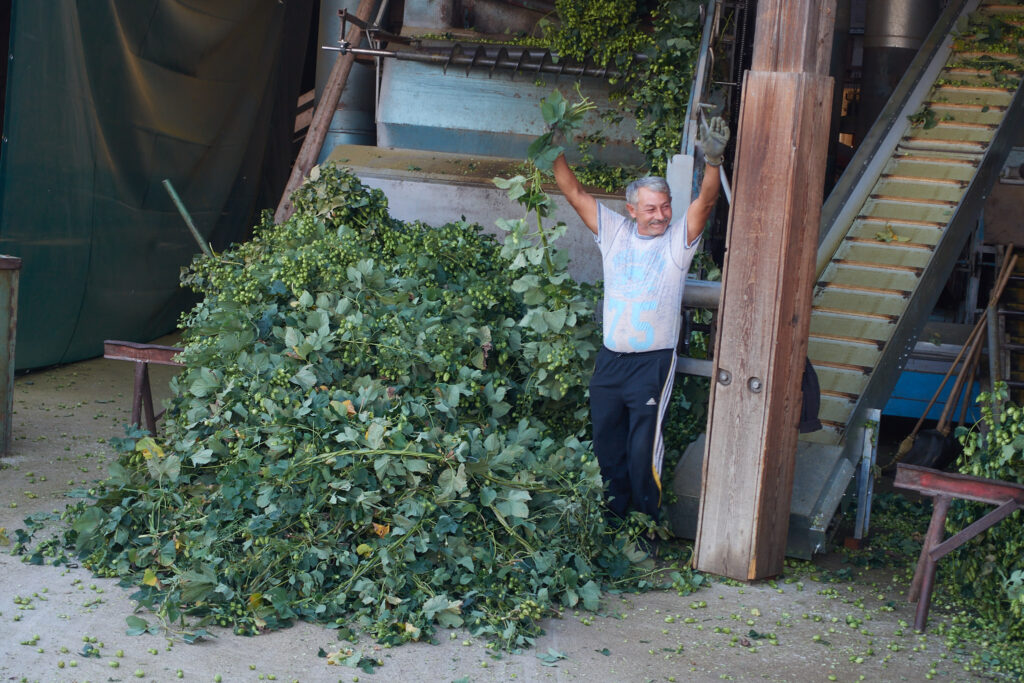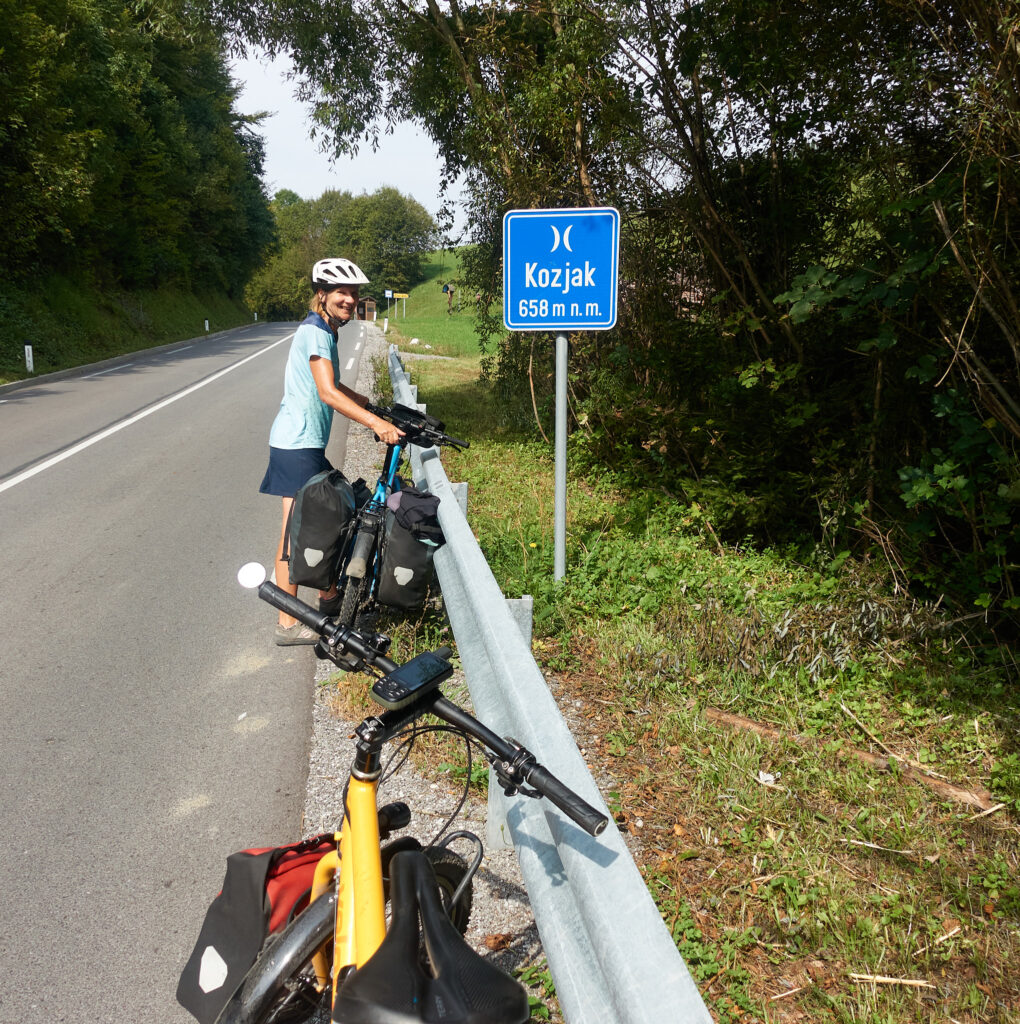Directly on the banks of the Danube opposite Bratislava run the Eurovelos (EV) 6 and 13. Which one to take? The EV 6 is the Danube cycle path towards the Atlantic. That is too leisurely for us and within a day’s distance to the next capital, Vienna – a bit too much big cities. We decide on the more exciting sounding EV 13 which runs along the border of the former Iron Curtain. The Iron Curtain separated democratic countries from communist ones in Europe between 1947 and 1990. In the west Lower Austria, in the east Hungary. For a long time the first flat stage in late summer, hot temperatures.

It is zonal borderland. In Austria, we drink a cappuccino with whipped cream at an unusual expensive price of €3.90.

After 100 kilometers and numerous border changes, the display of which seems a bit absurd to us, we cycle to one of the few campsites. Our tent is the only one. Otherwise, motor homes and caravans, most of them a bit outdated. Just like their owners. The thermal bath, for which one actually pays, is still open for two hours, and so we lie down with the guests in the warm water and rest our tired limbs.

The older ones may remember the beautiful film “I often think of Piroschka” (1955 – with Liselotte Pulver and Gustav Knuth). It is set at a train station in the Hungarian Puszta.




Western Hungary makes a better impression than Eastern Hungary four years earlier. At least the comparison with this part of Lower Austria, which seems desolate and abandoned, and the adjoining Burgenland, Hungary does not have to shy away.
After a nice garden camping with rustling hedgehogs and roaring deer we even find an open supermarket on Sunday, in front of which we have breakfast directly at the picnic bench.

Hardly we have passed the Hungarian-Slovenian border, we leave the EV13 in the east and cycle to Maribor on the Drava. Maribor’s twin town is beautiful and the campsite just before the ski jump has everything that cyclists, and campers want, and that in every season.



After two overnight stays and meetings with other touring cyclists and campers, we cycle off in a westerly direction. Via Celje we pass apple and wine growers on smooth paved roads. Harvest time is approaching. Hops are harvested and taken away. Like the tea on the Black Sea coast of Turkey in spring.


Alpine foothills in Slovenia, the Switzerland of former Yugoslavia (in more than one ways :D). On the right the Karavanke and on our left the Triglav Mountains and the Julian Alps. During the day everything is very, very hazy. Towards evening we have better visibility and a great scenery at the noble camping in Vransko, with starry sky and shooting stars.



Bloody Bled
The next day takes us to Bled. The lake with castle and church on the island attracts heaps of tourists. With them also goes the full tourist commerce, as well as the many regulations – bathing in the lake or just hold the foot in gives 200€ fine, cycling prohibited.

The whole thing is topped by our “River Camping Bled” for a proud 42€, whereby we find no cycling infrastructure. How good is the golden toilet bowl if we cannot even sit dry? Our proposal for the ‘golden cream puff’. Rain is announced and so we make ourselves directly the next day away.

Just before Kranjska Gora, after a wonderful ride on the D2 cycle path up the Sava River, with a magnificent view of the Spik (2473m) and its siblings in the Julian Alps, our campsite is located.




Fortunately, the weather forecast does not materialize. We go for a mountain hike in the Julian Alps and cycle the next day to the World Cup and World Championship venue Kranjska Gora/Planica – ski flying.


That’s it for the Slavic countries. At the end there’s a “Laško” (local beer).
